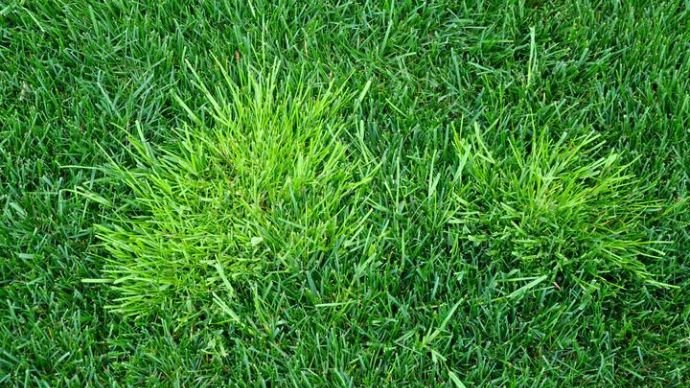If you’ve noticed your lawn transforming into a sea of tall, coarse grass, you might be facing an invasion of boreal alopecurus. This hardy weed can quickly take over, leaving your carefully manicured yard looking unkempt and wild. Whether it’s choking the life out of your favorite plants or ruining that lush green aesthetic you work so hard to maintain, understanding how to deal with this unwelcome guest is crucial. Let’s dive into the world of boreal alopecurus and uncover effective ways to reclaim your lawn from its grasp!
Understanding Boreal Alopecurus and its Impact on Lawns
Boreal alopecurus, commonly known as boreal fox-tail, is a perennial grass that thrives in cool climates. Its robust nature allows it to spread quickly, often outcompeting more delicate grasses.
This weed typically grows tall and forms dense clumps. Once established, it can choke the life out of surrounding plants by monopolizing nutrients and moisture. Homeowners may notice patches where desirable grass species struggle to thrive due to this invasive threat.
Additionally, boreal alopecurus has a unique seed structure that enables it to disperse easily across lawns. Wind or foot traffic can contribute to its spread, making control even more challenging.
Understanding its growth habits and environmental preferences is key for effective management. Recognizing how this weed affects your lawn helps in formulating strategies tailored specifically for your yard’s needs.
Signs that Your Lawn is Infested with Boreal Alopecurus
Identifying an infestation of boreal alopecurus in your lawn can be straightforward if you know what to look for. One of the first signs is the appearance of clumping grass. This species tends to grow in dense clusters, making it stand out from healthy turf.
Another indicator is color variation. While other grasses may remain a vibrant green, boreal alopecurus often takes on a more yellowish hue as it matures.
If you notice areas that feel spongy or soft underfoot, this could also point to a problem. The root system of this weed can create uneven surfaces.
Additionally, pay attention to its rapid growth during spring and early summer. If your lawn seems overrun with tall blades that seem different from your usual grass variety, it’s time for action.
Steps to Take in Getting Rid of Boreal Alopecurus
To tackle boreal alopecurus, start by mowing your lawn at a higher setting. This weakens the invasive grass while allowing your desired species to thrive.
Next, hand-pull any visible patches. Ensure you remove the entire root system to prevent regrowth.
For larger infestations, consider using a selective herbicide designed for grassy weeds. Always follow label instructions carefully and apply in calm weather to minimize drift.
Watering deeply but infrequently encourages the deeper roots of desirable grasses while stressing boreal alopecurus. A healthy lawn can outcompete this weed over time.
Overseed bare spots with native grass seed after treatment. This not only fills in gaps but also creates a more resilient turf against future invasions.
Prevention Tips to Keep Boreal Alopecurus from Reappearing
Maintaining a healthy lawn is key to preventing boreal alopecurus from making a comeback. Regularly mowing your grass at the right height strengthens your turf and reduces competition for sunlight.
Ensure proper watering practices as well. Deep, infrequent watering promotes strong root systems, making it harder for invasive species like boreal alopecurus to thrive.
Fertilization also plays an important role. Use high-quality fertilizers that encourage robust growth in desirable grasses while discouraging weeds.
Consider overseeding with native or drought-resistant varieties during the growing season. This adds density and diversity to your lawn, leaving less room for pests.
Keep an eye out for any new patches of unwanted grass early on. Prompt action can prevent small issues from turning into bigger problems later on.
Alternative Solutions for Lawn Maintenance
Consider integrating native plants into your landscape. They require less water and maintenance while supporting local biodiversity. This option promotes a healthier ecosystem.
Another approach is to adopt organic lawn care practices. Utilizing natural fertilizers enriches the soil without harmful chemicals. These products foster strong grass growth, making it difficult for invasive species like boreal alopecurus to thrive.
Introduce proper mowing techniques as well. Keeping blades sharp and adjusting the height can encourage dense grass growth, which competes effectively against weeds.
Additionally, explore mulch applications in garden beds and around trees. It conserves moisture while suppressing weed growth naturally.
Consider aeration regularly. Aerating helps enhance soil health by allowing air and nutrients to penetrate deep down where roots need them most.
Conclusion
Dealing with boreal alopecurus can feel overwhelming, but taking proactive steps makes a difference. Understanding its characteristics helps you identify it early.
Implementing effective removal strategies is key to restoring your lawn’s health. Combining cultural practices with targeted treatments ensures long-lasting results.
Regular maintenance and monitoring are essential in keeping this invasive grass at bay. By staying vigilant, you’ll enjoy a lush, green lawn free from unwanted invaders.
Remember that prevention plays a significant role in maintaining your yard’s beauty. Simple changes can foster an environment where desirable grasses thrive instead of invasive species.
Your efforts will pay off as you watch your lawn flourish once more—creating the outdoor space you’ve always envisioned.
